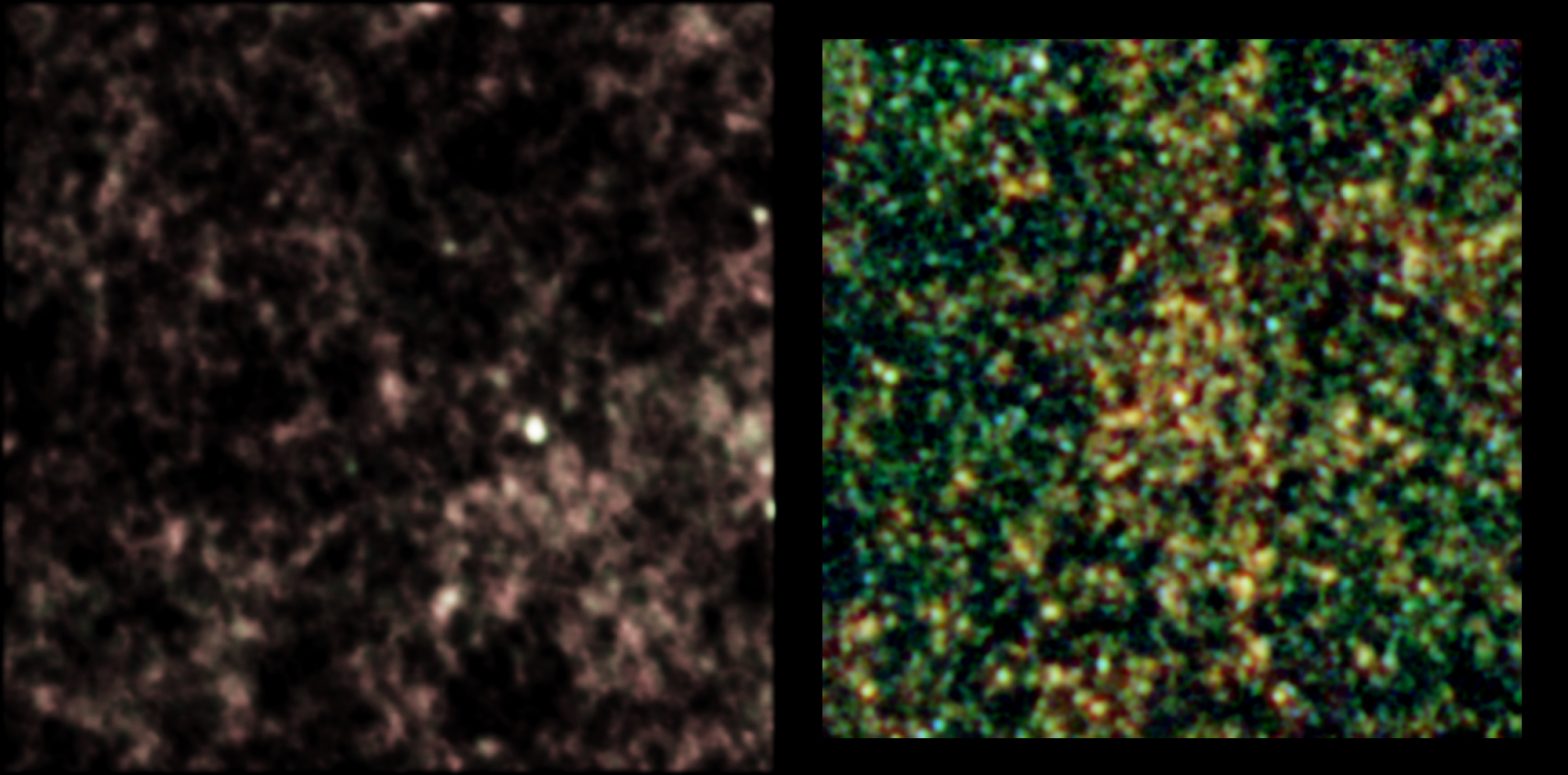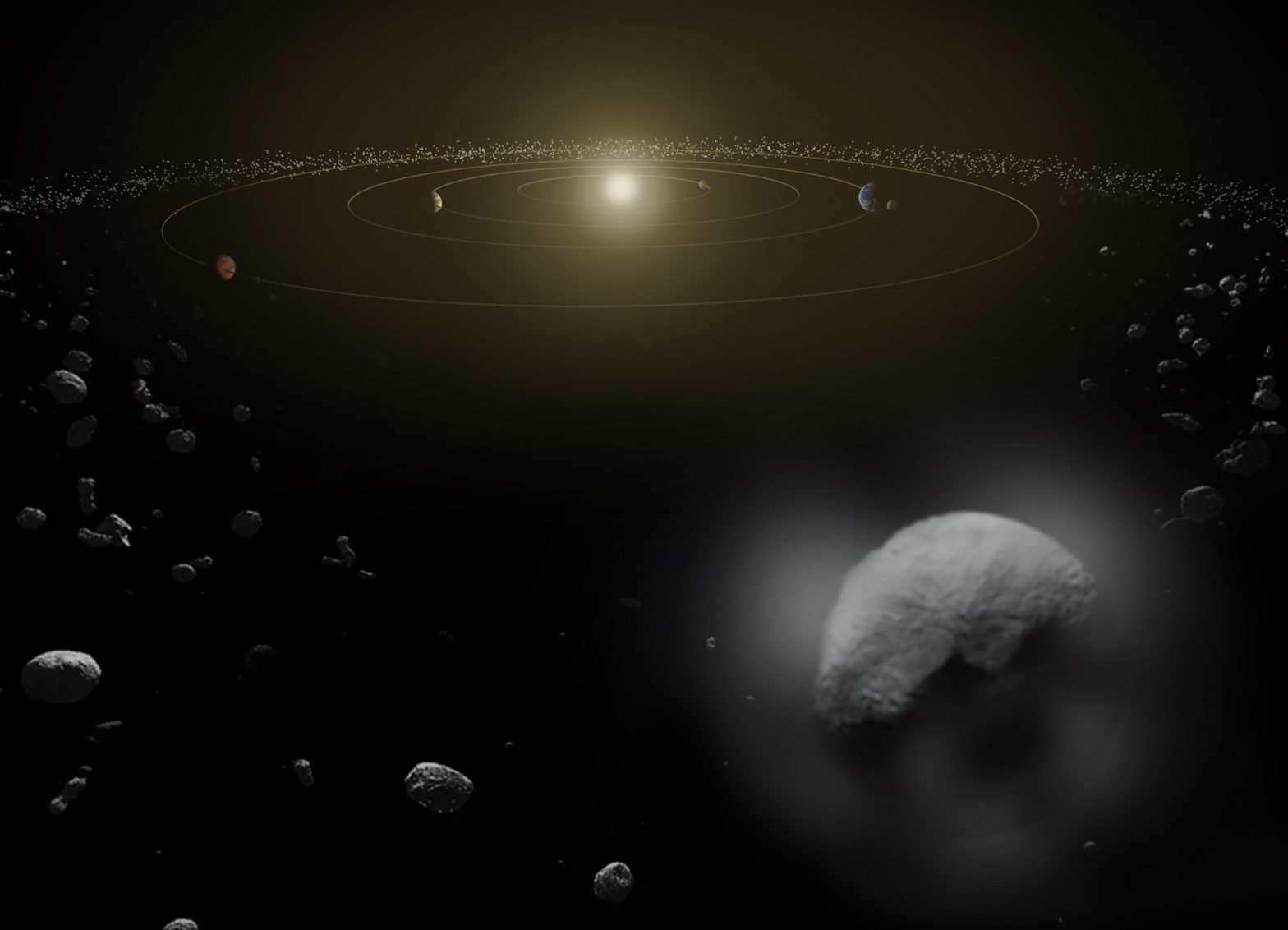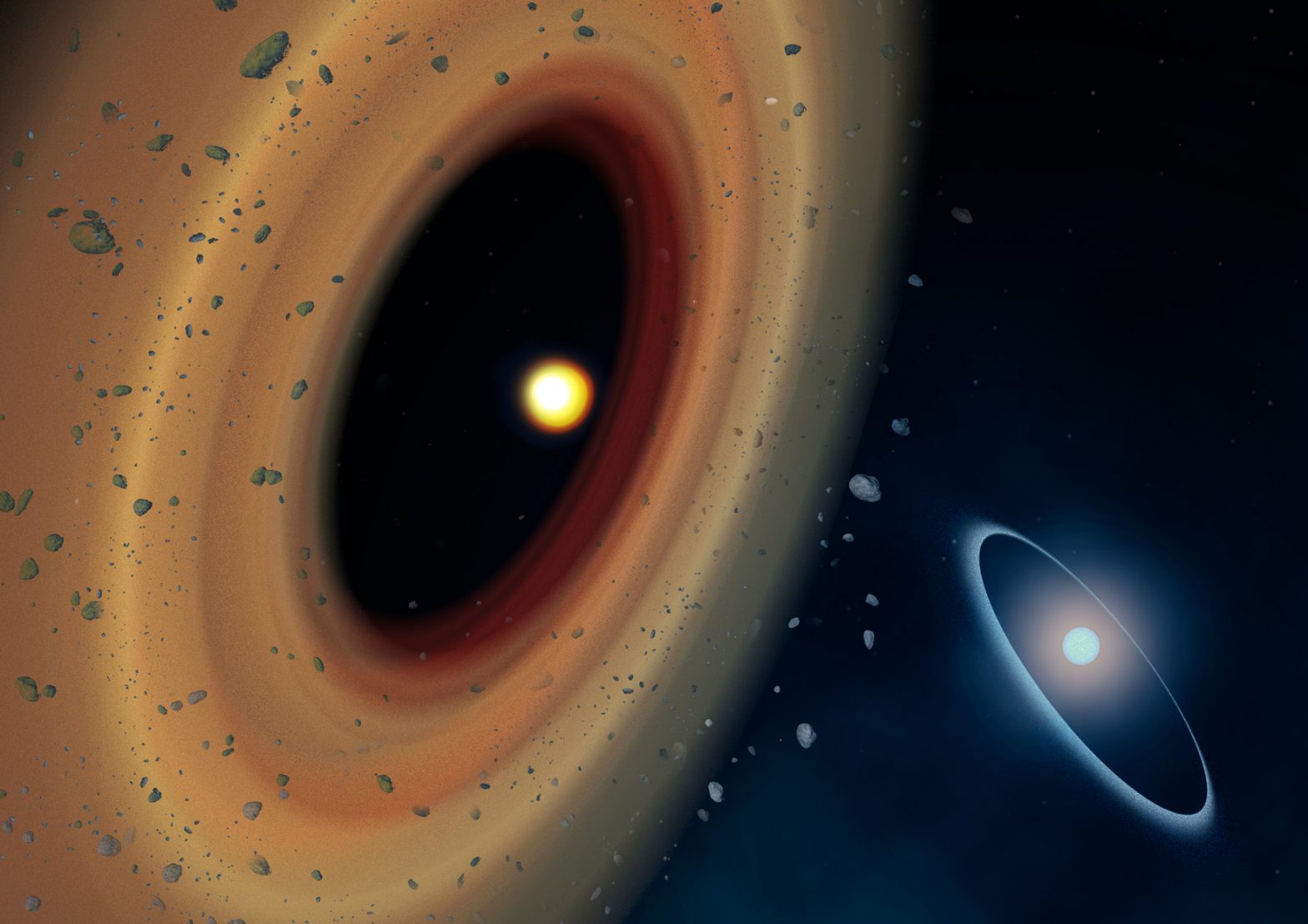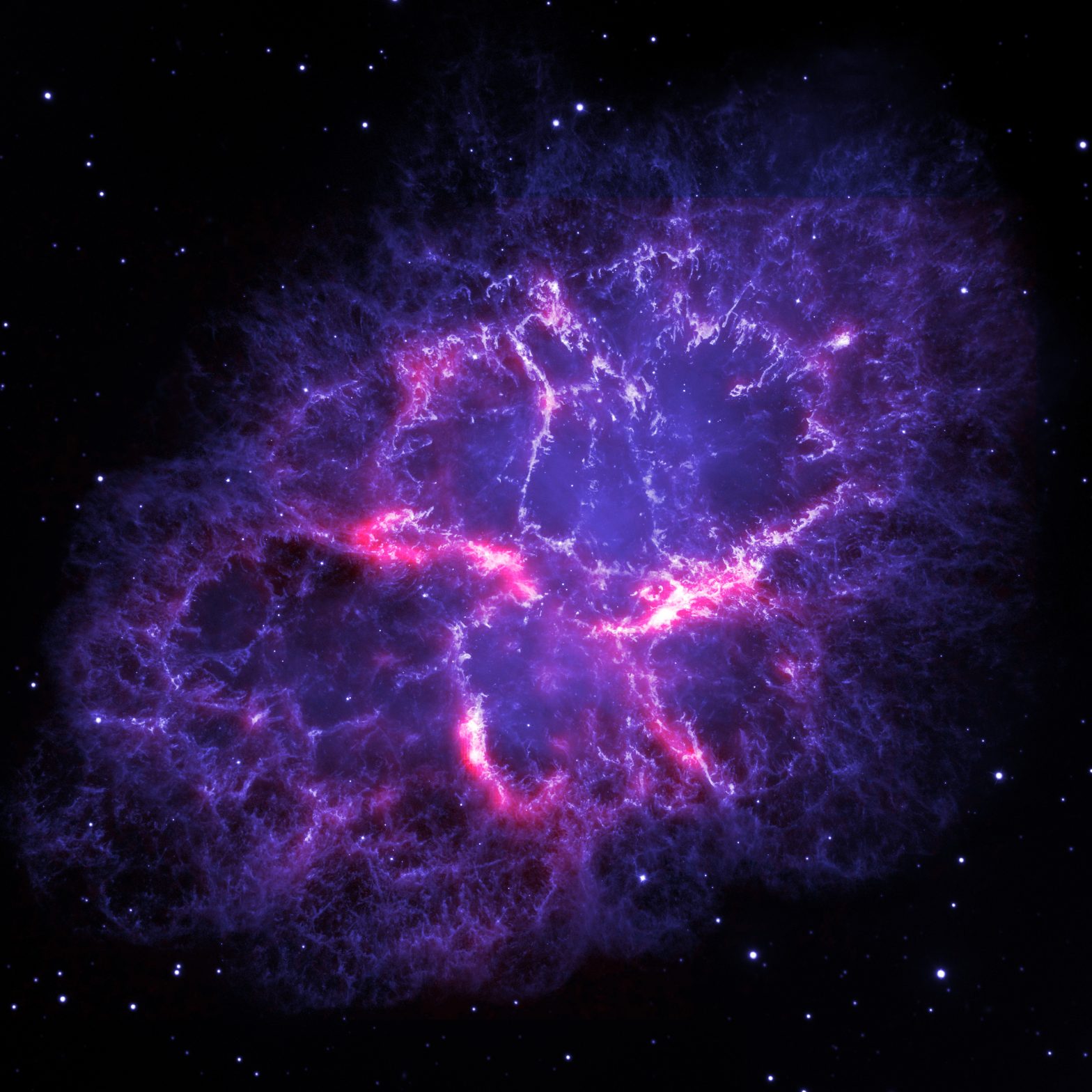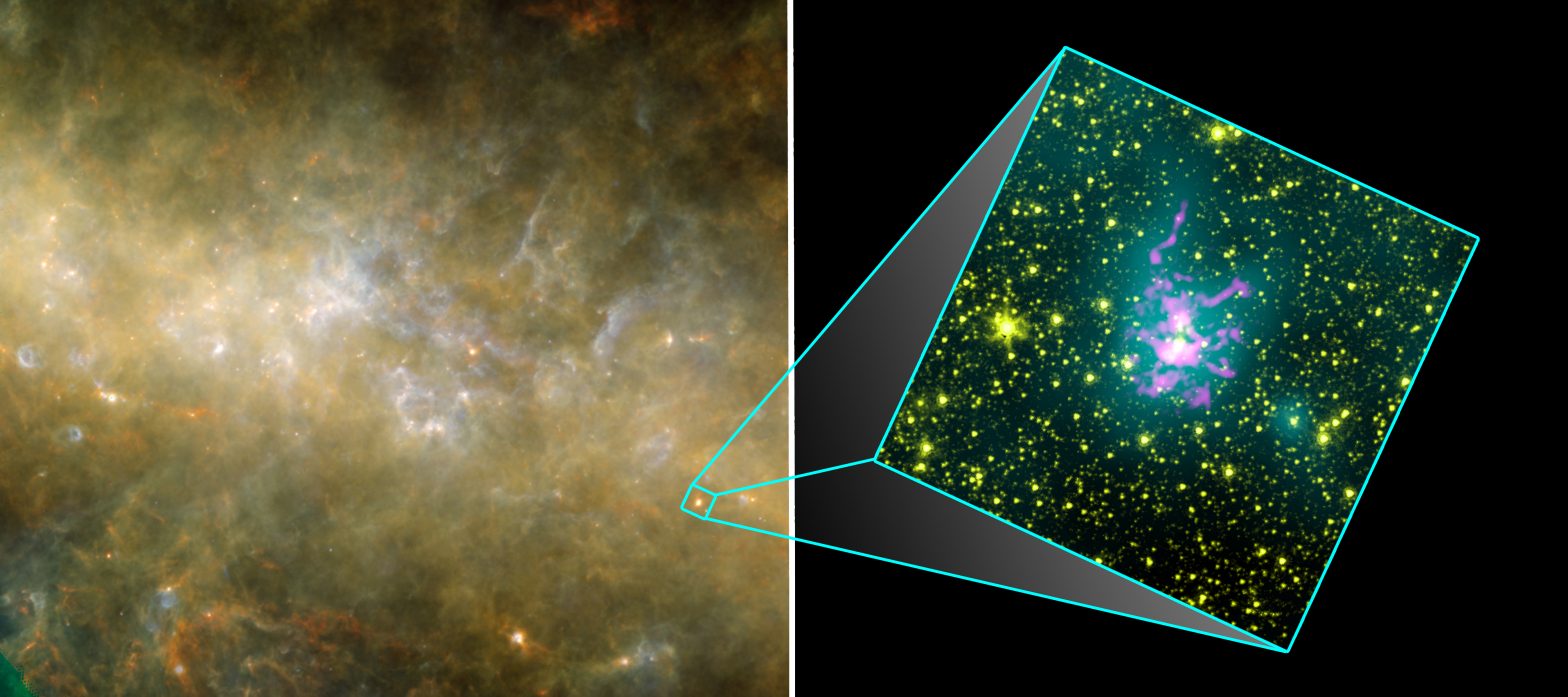Basic Information What is this? A distant cluster of galaxies Where is it in the sky? In the constellation of Bootes How big is it? The cluster contains hundreds or thousands of stars, spanning distances of millions of light years How far away is it? The cluster is seen as it was over ten billion …
Author archives: alexloader
Ceres
Basic Information What is this? An artist’s impression of Ceres, a dwarf planet in the asteroid belt Where is it in the sky? It moves around the sky as it orbits the Sun, but can currently be found in the constellation of Virgo How big is it? Around 950km across, and the largest object in …
Fomalhaut C
Basic Information What is this? An artist’s impression of the belt of comets around the star Fomalhaut C, with Fomalhaut A in the background Where is it in the sky? In the constellation of Piscis Australis How big is it? The ring of comets is at least 3 billion km across How far away is …
Argon in the Crab Nebula
Basic Information What is this? The Crab Nebula Where is it in the sky? In the constellation of Taurus How big is it? Around 10 light years across How far away is it? Around 6500 light years away What do the colours represent? Blue and purple shows visible light seen by the Hubble Space Telescope, …
The first B-mode detection
Basic Information What is this? On the right, thousands of distant galaxies,and on the left, subtle variations in the light from the early Universe Where is it in the sky? In a seemingly empty part of the sky in the southern hemisphere How big is it? The patch of sky shown is around 10 degrees …
Spitzer Dark Cloud 335
Basic Information What is this? A cloud of gas and dust in which an incredibly massive star is forming Where is it in the sky? In the constellation of Norma How big is it? The largest-protostellar core is 500 times as massive as our Sun How far away is it? Around 11,000 light years What …

